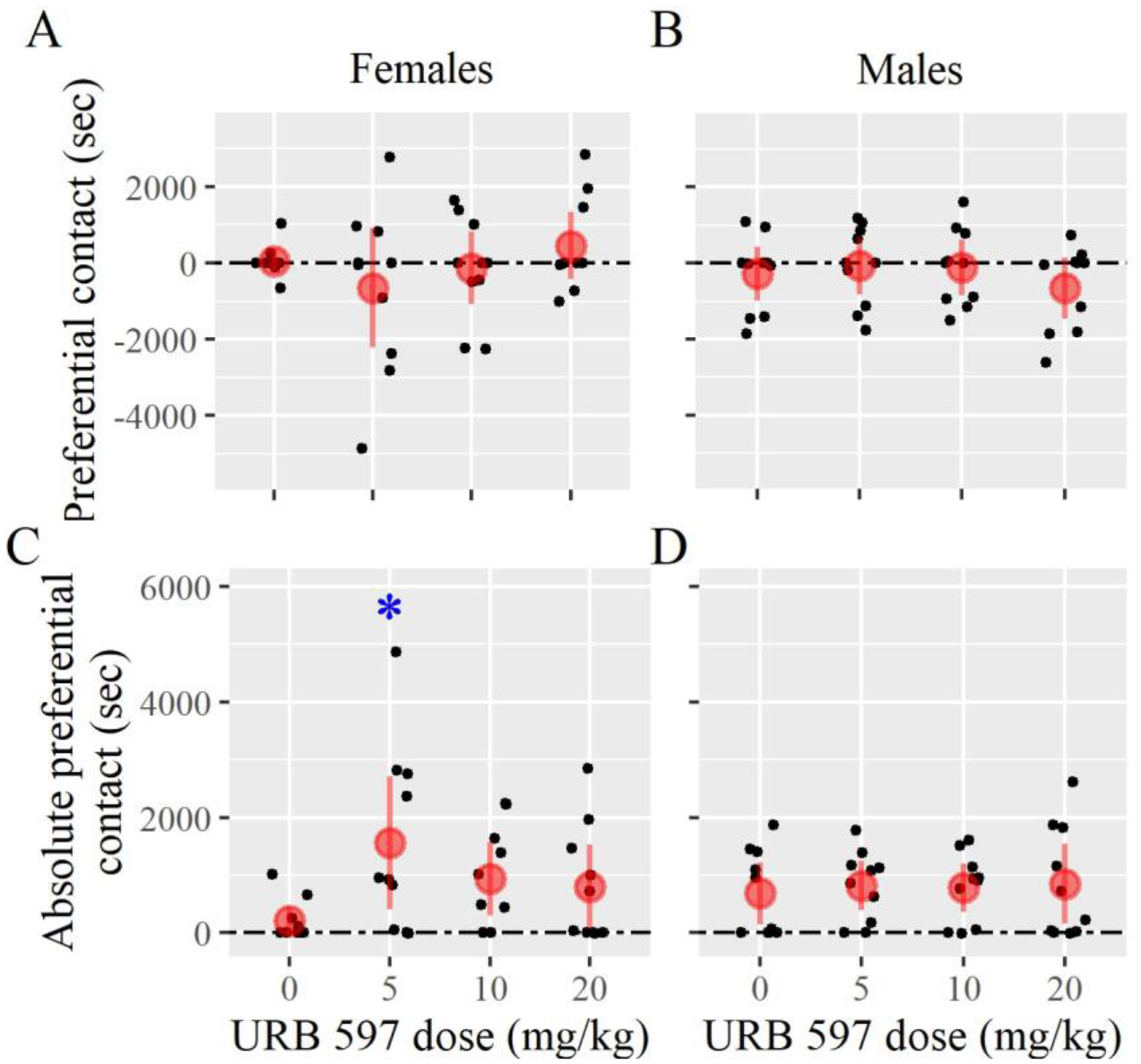Figure 3 –

Partner preference test results from Experiment 2 using URB597. Females from each treatment group spent similar time in preferential contact (calculated for each subject by subtracting the time in contact with the stranger from the time spent in contact with the partner) (A) but low-dose females increased absolute preferential contact (the absolute values of preferential social contact) (C). Males from each treatment group spent similar time in preferential contact (B) or in absolute preferential contact (D). Error bars are 95%-confidence intervals. Symbols: * p < 0.05).
